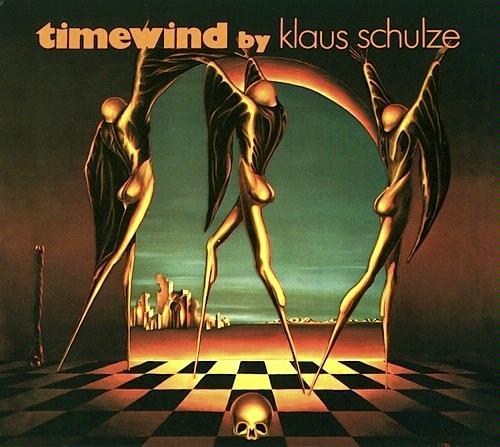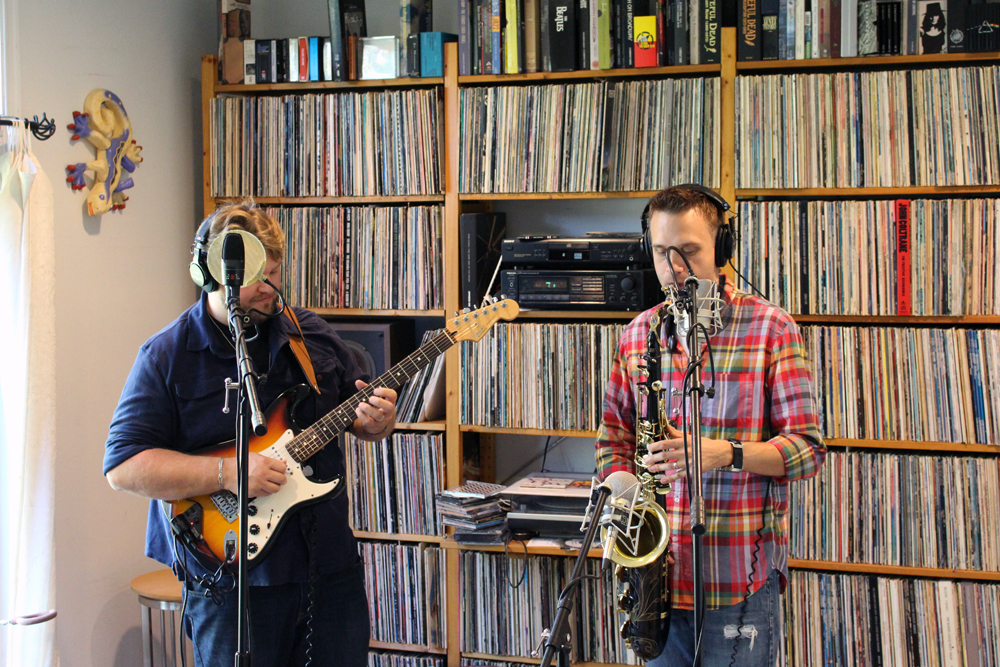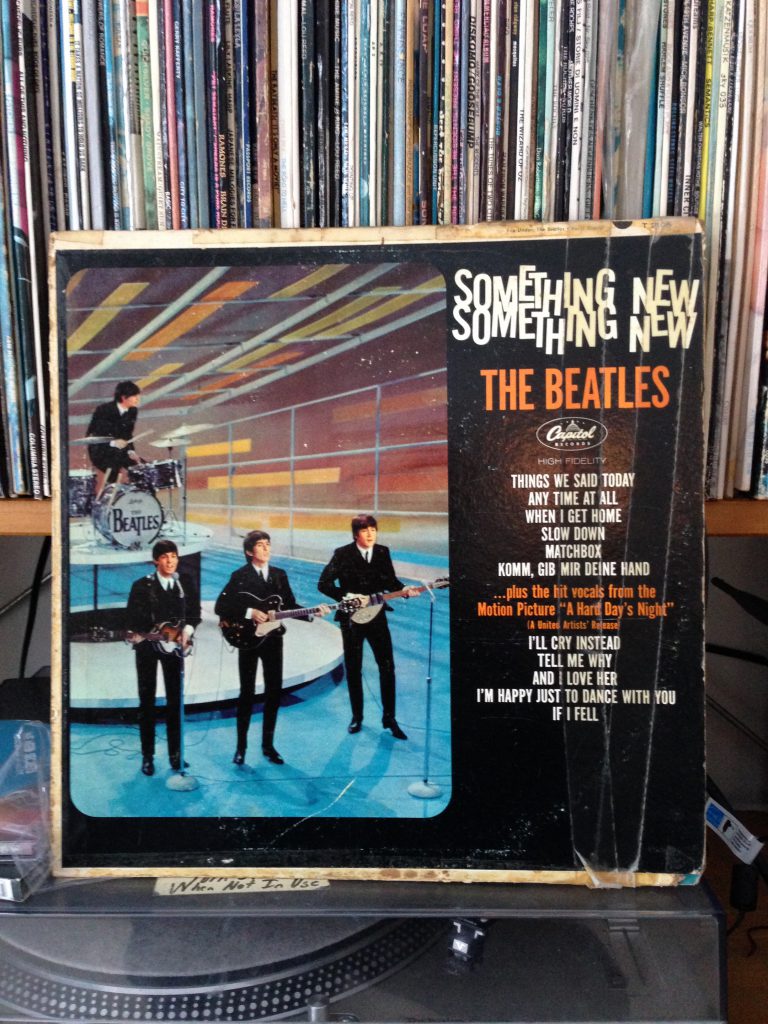The Spiraling Vinyl Return: Why?
Written by John Diliberto on January 4, 2017
The Guardian Newspaper in England reports that vinyl sales rose 53% over last year and that vinyl has overtaken downloads for music sales. Against all expectations, that archaic format of black discs scraped by a diamond needle and turned into sound has been surging for the last decade, after being left for dead in the 1980s upon the arrival of CDs. My question is: Why?
As a vinyl junkie, I should applaud this return, but I am as torn as the shrink wrap I ripped off every one of these albums by the rise of vinyl records. My vinyl collection has modulated bliss with bane. Maybe it’s because I remember listening to spacious albums like Pink Floyd’s Meddle or Klaus Schulze’s Timewind, only to have that otherworldly experience brought back to earth by clicks and skips and hiss. Even though my collection is pristine, I’ve had too many instances where right out of the sleeve, releases sounded like they were pressed on sandpaper, especially those on RCA’s Dynaflex discs. Or maybe I’m ambivalent because of memories of all those apartment moves with all those records, from Massachusetts to Philadelphia to Berkeley, back to Philly and several points in the area. I remember covering the floor of the University of Pennsylvania football team’s offensive line coach with my album crates during summer training while I awaited the opening of dorms.
When CDs arrived, I thought it was nirvana. No more clicks and pops and skips. With digital recording, a seemingly bottomless noise floor surrounded notes with blissful silence, not blanketing hiss. And the dynamics were so much wider. Bass notes were no longer restricted by the limited physics of vinyl. I did miss the large format covers and regretted the new miniscule printing, more so as I got older. But that was worth the price of crystal clear sound and convenience, like skipping over tracks with a remote from across the room. I really only needed to listen to “Revolution #9” once or twice.
MP3, AAC, etc, were not formats I loved, because of their sometimes crunchy, limited sound. There were no liner notes or graphic art without a lot of hassle and did I mention the crappy, crunchy sound? But let’s say I concede that there might be some sonic superiority to vinyl over CD, which I don’t really feel. That “superiority” is largely diminished because so many people are listening to these albums on cheap turntables through crummy stereo systems, that is, if they get to that at all. Many just plug in the (usually cheap) turntable’s USB cable into their laptop and listen on computer speakers. There is no benefit in sound quality there. And albums from the 90s into the oughts were almost all recorded digitally anyway, so you’re not gaining any sonic superiority putting it on vinyl. Even records recorded on analog multi-track are often mastered digitally.
Exempting hipsters and collectors, I do get the appeal of vinyl for normal folks. Full format FLAC downloads sounded as good as CDs, but something was missing: a tangible product, that piece of art you could hold and see. I stream music on Spotify all the time, but I am much less connected to that music than something that is actually in my collection which I can pull out, see, read and play on a decent sound system.
 This was brought home a few years ago when I received vinyl copies of several Brian Eno reissues from the early 90s: The Drop, Nerve Net and The Shutov Assembly. These were all albums I had on CD and enjoyed to varying degrees, but one thing that struck me with the vinyl releases was the vividness of the art. I’d always been dismissive of The Drop‘s “poster art” style cover on CD, but on 12X12 vinyl, the image of a warehouse forklift is striking, like those Russian propaganda posters from the 50s and 60s. Likewise, the ambiguous scribbles of The Shutov Assembly, taken from a video painting “Egypt” by Eno & Greg Jakobek, reveal a new depth as a 12X12 cover. Of course, I just have to go to that wall of albums to get the same effect, whether it’s my worn copy of Sgt. Pepper’s Lonely Hearts Club Band or Tangerine Dream’s Phaedra (the CD issues of which always ruined the cover with a framing effect.)
This was brought home a few years ago when I received vinyl copies of several Brian Eno reissues from the early 90s: The Drop, Nerve Net and The Shutov Assembly. These were all albums I had on CD and enjoyed to varying degrees, but one thing that struck me with the vinyl releases was the vividness of the art. I’d always been dismissive of The Drop‘s “poster art” style cover on CD, but on 12X12 vinyl, the image of a warehouse forklift is striking, like those Russian propaganda posters from the 50s and 60s. Likewise, the ambiguous scribbles of The Shutov Assembly, taken from a video painting “Egypt” by Eno & Greg Jakobek, reveal a new depth as a 12X12 cover. Of course, I just have to go to that wall of albums to get the same effect, whether it’s my worn copy of Sgt. Pepper’s Lonely Hearts Club Band or Tangerine Dream’s Phaedra (the CD issues of which always ruined the cover with a framing effect.)
So I understand the attraction of the visual and tactile feel of records. From a nostalgic point of view, I love going to my wall of records and pulling out my originals of Herbie Hancock’s Blue Note albums, The Rolling Stones original 3D Their Satanic Majesties Request, or the Urs Amann covers of Klaus Schulze albums. Yet, every time a band comes in and offers me a vinyl copy of their album, of which they are so justifiably proud, I balk. I just don’t need another disc, especially of unnecessary 180-gram weight vinyl, to weigh me down. I’ve got boxes of them as it is, unopened.
Now, ironically, albums that had most benefitted from CD sound quality, are being reissued in vinyl formats. Steve Roach’s Structures from Silence is being reissued on vinyl. If ever an album benefitted from the digital medium it was that one. The double irony is, it was first released on cassette, so maybe that reissue isn’t far behind because there is also a cassette revival happening. Apparently it’s true: What goes around, comes around, and many would rather be spun like a record than poked like a digital file.
I still have my collection, including the very first album I bought with snow-shoveling money in the winter of 1965: The Beatles’ Something New in mono. But the collection itself has gone from about 7000 albums at its peak to about 4500 albums as LPs turned into CDs. I continue listening to those records several times a week, but I was happy to see them gradually replaced by Compact Discs.


